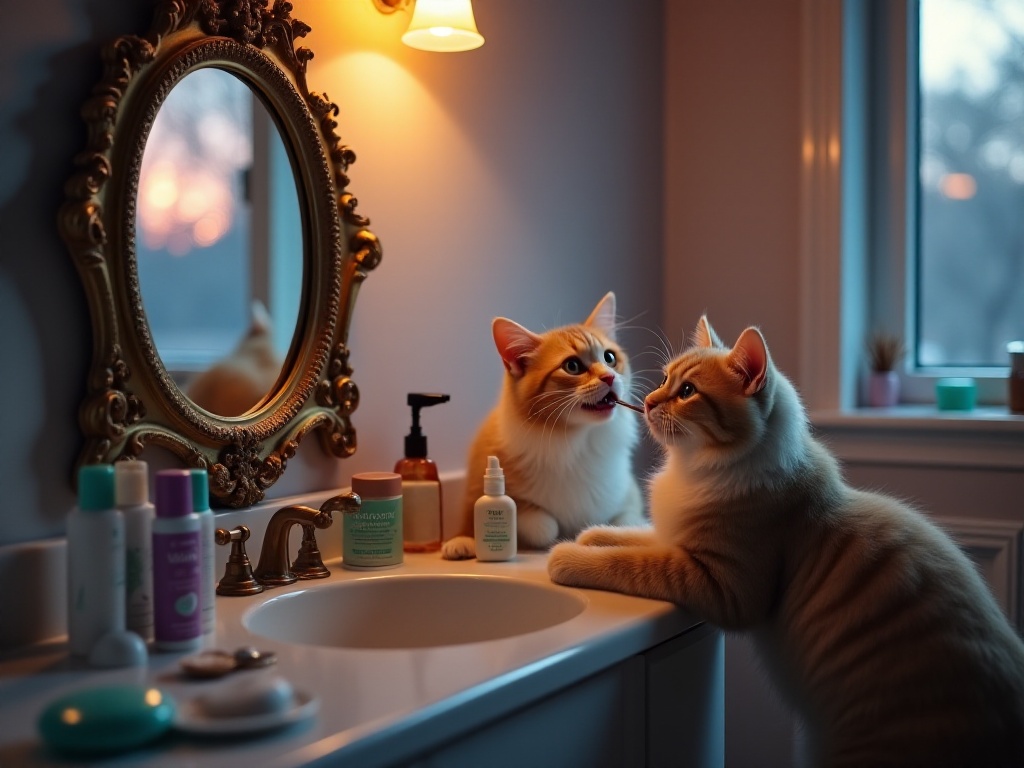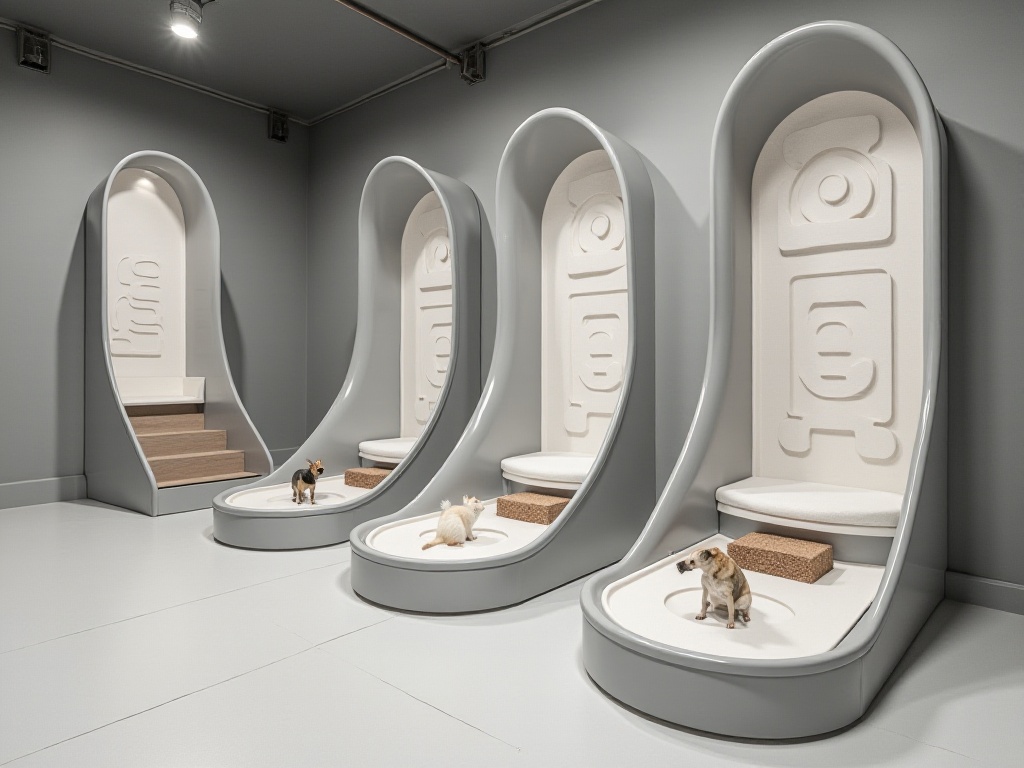Introduction
Hello everyone! As a seasoned pet owner with over a decade of experience, I've been through countless situations. From the initial confusion and overwhelming responsibilities to now being able to handle various situations with confidence, I've learned a great deal along the way. Today, I'd like to share my experiences to help both current and prospective pet owners avoid common pitfalls.
When I first started caring for pets, I found it incredibly challenging, feeling overwhelmed by daily tasks. Between scheduled feeding, regular walks, cleaning, and bathing, it seemed like the work was never-ending. However, as time passed, I discovered that pet care can become both manageable and enjoyable once you master certain key points and techniques.
Health Monitoring
When it comes to pet care, health is undoubtedly the most crucial aspect. Just as humans need regular check-ups, pets require routine veterinary visits. Based on my years of experience, pets should have at least one comprehensive examination annually. Many veterinary clinics now offer annual check-up packages that include basic examinations and vaccinations at reasonable prices. Regular check-ups truly help detect issues early, preventing minor problems from becoming major concerns.
I recall one instance when a routine check-up revealed mild tartar buildup on my dog's teeth. Without regular examinations, we might not have noticed until my dog showed obvious discomfort, making treatment much more complicated. That's why I strongly emphasize the importance of regular check-ups.
Vaccination is absolutely crucial as a health protection barrier. My cat has received timely vaccinations since kittenhood and has never experienced any serious illness. Remember, prevention is always more economical and less stressful than treatment. With various pet vaccines available today, I recommend consulting your veterinarian to choose the appropriate vaccination schedule based on your pet's specific situation.
Timing is crucial for vaccinations. For example, after the first combination vaccine, booster shots must be administered according to schedule. This timing must be strictly followed and not arbitrarily delayed. I set reminders on my phone to ensure I never miss any vaccination appointments.
Weight management is another crucial topic. Did you know that over 40% of pets are overweight? Obesity can lead to numerous health issues, including arthritis, heart disease, and diabetes. My approach involves scheduled, measured feeding using a dedicated food scale. If weight gain is noticed, I adjust portions or increase exercise accordingly.
For weight management, I have a useful tip. I weigh my pets weekly on a set day and record the data. This helps track weight trends. If weight increases for three consecutive weeks, I adjust food portions or increase exercise time. This method has been particularly effective in maintaining my pets' healthy weight.
Beyond regular check-ups and vaccinations, daily health observation is vital. Monitor your pet's energy levels, appetite, and bowel movements morning and night. Seek veterinary care promptly if you notice abnormalities. Changes in appetite, lethargy, or irregular bowel movements could signal health issues.
I maintain a dedicated health record book for my pets, tracking weight changes, medical visits, and vaccination dates. This helps us monitor their health status and provides detailed medical history for veterinary visits.

Daily Living
After discussing health, let's talk about daily life tips. These seemingly small matters significantly impact your pet's quality of life.
First, let's address dietary issues. Have you encountered dogs eating too quickly? This is actually a common problem. Rapid eating can lead to indigestion and vomiting. I discovered an effective solution: placing a tennis ball in the food bowl. This forces the dog to eat around the ball, naturally slowing their eating pace. For cats, specially designed slow-feed bowls with raised sections can prevent rapid eating.
When selecting food, consider your pet's age, size, and health condition. Puppies and kittens need food with higher protein and energy content, while senior pets require more digestible options. Pets with specific health issues, such as kidney disease or allergies, need prescribed diets.
Here's a particularly useful trick: homemade frozen treats. During summer, I freeze chicken broth with fruits and vegetables into ice cubes, providing both cooling relief and nutrition. My dog loves these treats and gets excited whenever I take out the ice cubes. Remember to use only pet-safe fruits and vegetables like carrots and apples, avoiding harmful foods like grapes and alliums.
Regarding water consumption, many think a simple water bowl suffices. However, there's more to consider. I use an automatic circulating water fountain that maintains fresh water quality and attracts pets with moving water. Cats especially prefer flowing water sources. Additionally, water bowl placement matters - ideally in a quiet corner, away from food and litter boxes.
Sleep environment setup is also important. Like us, pets need comfortable, quiet rest areas. I've provided my dog with a memory foam bed, adding a warming pad in winter. Cats prefer elevated spaces, so I've installed cat trees with comfortable bedding. These sleeping areas require regular cleaning for hygiene.
Exercise is essential in daily life. Dogs need regular walks, not just for bathroom breaks but for exercise and socialization. I typically walk my dog during moderate temperature times in morning and evening, for about thirty minutes to an hour. While cats don't need walks, they require adequate space and toys for sufficient exercise.

Environmental Hygiene
Regarding cleanliness, many struggle with pet shedding. I've found an excellent method: wearing disposable gloves and running your hands over furniture and carpets effectively collects fur. This works better than vacuuming and requires less effort. Regular brushing is also important, reducing shedding and helping detect skin issues early.
I brush my pets daily using professional brushes suited to different fur types. Long-haired pets need pin brushes and combs, while short-haired ones can use rubber brushes. Brushing requires the right pressure - too hard can hurt the skin, too light won't clean effectively. It's important to establish this habit early, making pets more cooperative as they grow.
Dealing with pet urine stains requires skill. My secret is a mixture of baking soda and vinegar. First absorb the urine with paper towels, then spray vinegar solution, followed by baking soda powder. Once dry, vacuum - this removes stains and eliminates odors. This method works particularly well on carpets and fabric furniture.
Litter box maintenance is crucial. I clean at least twice daily, morning and evening. Use a dedicated scoop to remove clumps, maintaining litter box cleanliness. Weekly thorough cleaning involves washing with mild detergent, drying completely, and adding fresh litter.
Litter selection is important, with various options like bentonite, tofu, and crystal litter available. I suggest trying small packages to find what your cat prefers. I use mixed litter - tofu litter base with bentonite top layer for optimal dryness and easy cleaning.
For dogs, regular bathing is essential. I determine bathing frequency based on coat type and lifestyle. Generally, short-haired dogs need baths every two weeks, long-haired weekly. Use pet-specific products, maintain appropriate water temperature, and thoroughly dry the coat to prevent chills.
Home environment maintenance requires regular ventilation, floor cleaning, and furniture dusting. I use pet-safe deodorizers for freshness.

Behavior Management
Finally, let's discuss behavior management. Many don't realize walking dogs requires technique. I recommend playing fetch downhill for better exercise efficiency. Walks should include basic training like obedience and recall exercises.
Training requires patience and gradual progress. I use positive reinforcement, rewarding correct behavior rather than punishing mistakes. Rewards can include treats, petting, or verbal praise. Train in quiet environments for 15-20 minute sessions.
Another important recommendation: provide puzzle toys. Many toys hide treats, requiring pets to think for rewards. This maintains interest and develops intelligence. My dog particularly enjoys these toys.
For cats, scratching is instinctive. Protect furniture by providing dedicated scratching posts or cat trees. Place them in active areas and attract cats with catnip. Use water sprayers to discourage furniture scratching while encouraging scratching post use.
Socialization is crucial in behavior management. Pets need appropriate social activities, like visits to pet parks for interaction with other animals. Monitor their reactions and intervene if they show tension or aggression. New pet owners should start socializing with familiar pets before expanding their circle.

Conclusion
Pet care requires time and effort, but becomes manageable with proper methods. Watching them grow healthy and happy provides irreplaceable satisfaction. Their wagging tails greeting me home dispel all fatigue.
Remember, pet ownership isn't a temporary commitment but a long-term journey. They become important family members, accompanying us through life's ups and downs. I hope all pet owners can enjoy their time with their furry friends and create wonderful memories together.
Do you have any pet care experiences to share? Or questions about the techniques mentioned? Feel free to discuss - let's learn together to create better lives for our pets.
Related articles




